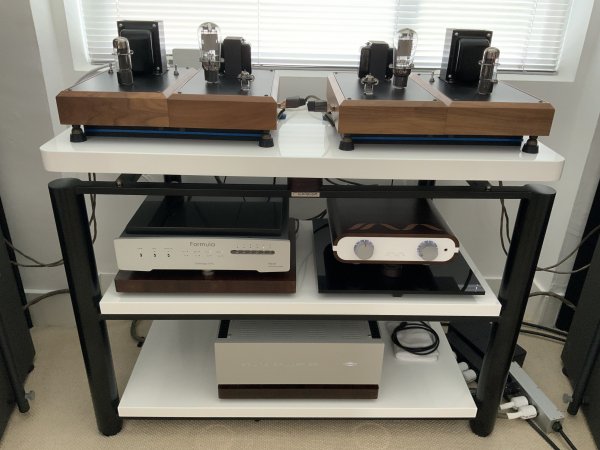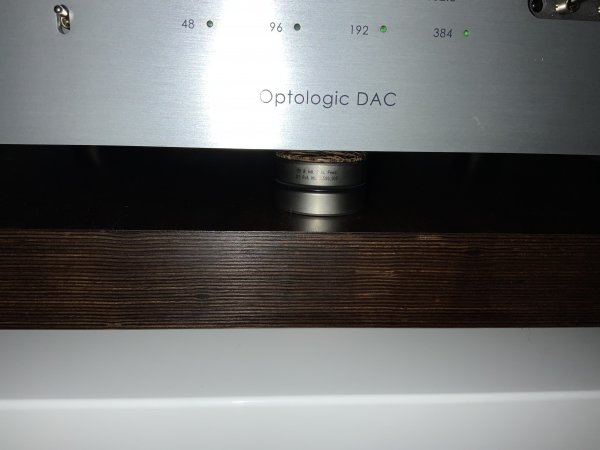Second Daiza installed under the SGM2015 today, using the stock feet, and immediately there is another uptick in sound quality. Timing appears to be faster with more bounce to bass notes as in Blue Rondo they just bounce along with such swing and precision.
Music just sounds more fun.
I’ve never heard the deep bass note in Yulunga - Dead Can Dance explode and then bounce in waves like a rubber ball along the floor. I’ve heard it plenty deep before but never like this. Vocals have great density and presence and a certain clarity that doesn’t turn into thinness. This clarity allows you to hear much further back into the soundstage too.
MikeL and Audiophile Bill were right.
Blue58
Music just sounds more fun.
I’ve never heard the deep bass note in Yulunga - Dead Can Dance explode and then bounce in waves like a rubber ball along the floor. I’ve heard it plenty deep before but never like this. Vocals have great density and presence and a certain clarity that doesn’t turn into thinness. This clarity allows you to hear much further back into the soundstage too.
MikeL and Audiophile Bill were right.
Blue58




